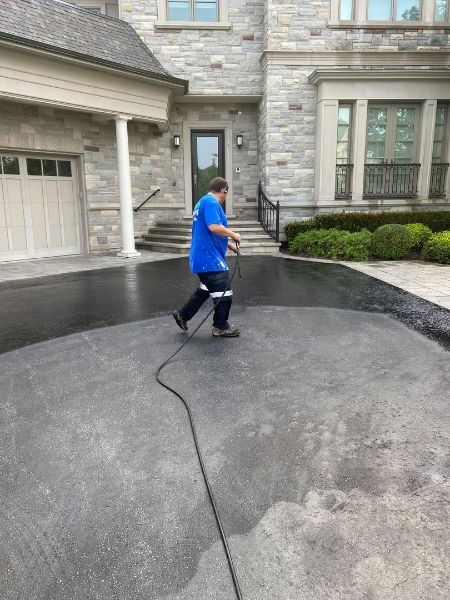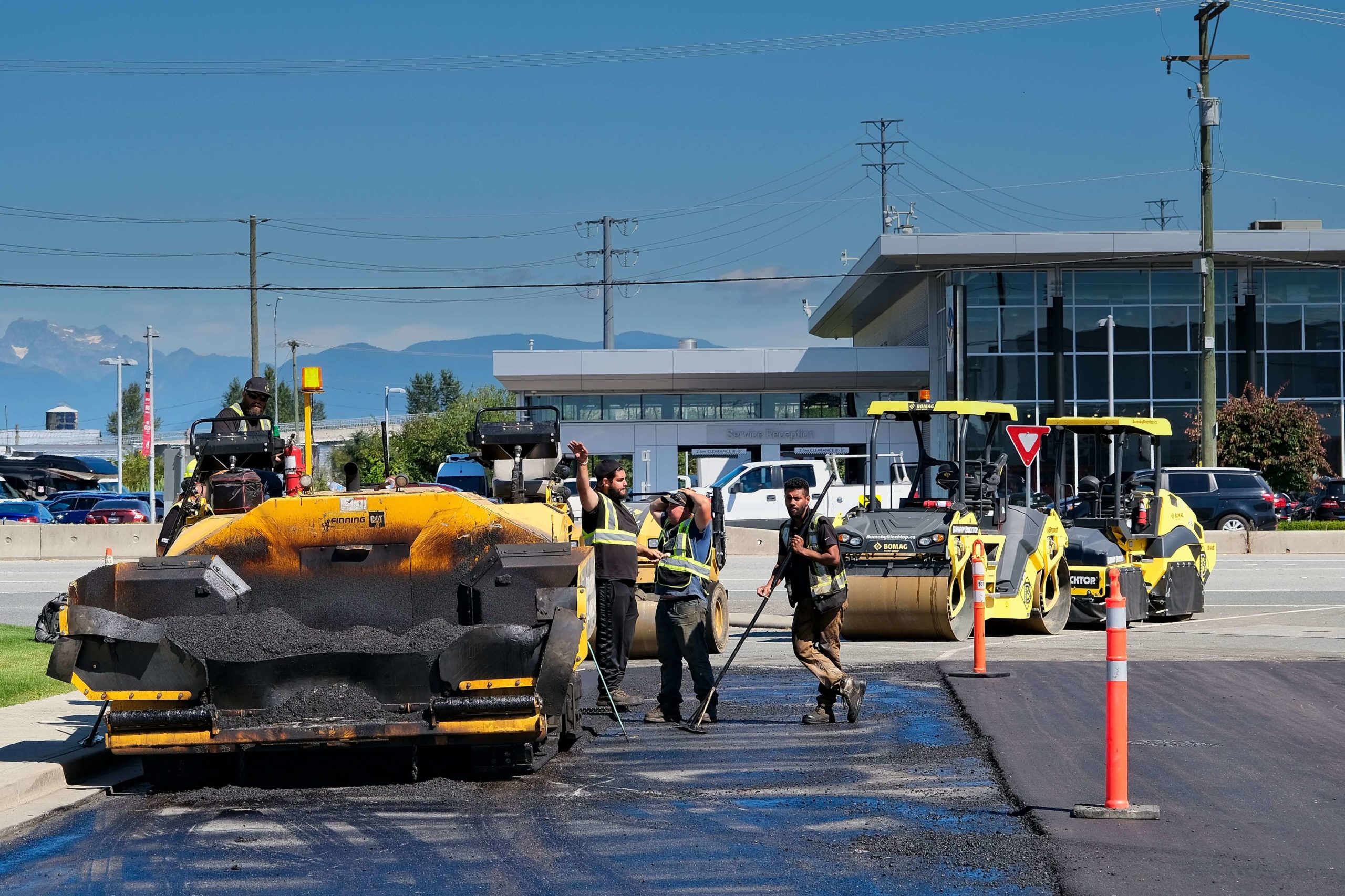Hot Mix Asphalt: A Lasting Option for Sidewalk
Hot Mix Asphalt (HMA) has actually emerged as a leading sustainable choice for pavement remedies, using a myriad of innovative innovations and ecological advantages. As the demand for environmentally friendly construction practices expands, checking out the nuances of HMA's sustainability can supply valuable insights into the future of sidewalk solutions.
Ecological Advantages of Warm Mix Asphalt

Moreover, Warm Mix Asphalt aids to alleviate city warmth island results. Its dark shade soaks up sunlight, minimizing the quantity of warmth mirrored back into the environment contrasted to lighter-colored sidewalks. This can lower ambient temperature levels in city locations, lowering the demand for a/c and ultimately reducing energy consumption.
Furthermore, Warm Mix Asphalt adds to improved stormwater monitoring. Its permeable nature enables water to infiltrate the sidewalk and charge groundwater materials, reducing overflow and the danger of flooding. These ecological advantages make Hot Mix Asphalt a sustainable selection for leading highways and roads.
Energy Performance in HMA Manufacturing
Is power efficiency an important consider the production of Warm Mix Asphalt (HMA)? Definitely. Energy plays a substantial function in the manufacturing of HMA, impacting both price and ecological sustainability. One key facet of power performance in HMA manufacturing is the use of cozy mix asphalt (WMA) innovations (commercial parking lot paving). WMA permits for the mixing and positioning of asphalt at reduced temperatures compared to typical warm mix asphalt, causing minimized energy consumption throughout production. This procedure not just reduces fuel use but also reduces greenhouse gas exhausts, making it an extra eco-friendly choice.
Additionally, advancements in plant innovations have led to even more energy-efficient HMA manufacturing procedures. Modern plants are designed with functions like recycled asphalt pavement (RAP) handling capacities, effective heater systems, and improved insulation, all adding to energy savings. By optimizing power use in HMA production, the sector can lower its carbon footprint while preserving top notch pavement materials. Energy performance is, for that reason, a vital consideration in making certain the sustainability of Hot Mix Asphalt manufacturing.
Recyclability of Warm Mix Asphalt
The recyclability of Warm Mix Asphalt (HMA) is a crucial aspect of its sustainability and lasting environmental effect. HMA is just one of the most recycled materials in the USA, with over 100 million lots of recovered asphalt sidewalk (RAP) being recycled annually in brand-new pavement building and construction. Recycling HMA provides several environmental benefits, such as reducing the need for virgin products, decreasing power usage during manufacturing, and lowering the amount of waste sent to garbage dumps.
The process of reusing HMA involves grating the existing sidewalk, squashing it right into smaller pieces, and blending it with new accumulation and asphalt binder to create a recycled mix. This recycled mix can often do as well as or even much better than traditional HMA, while requiring less resources and creating reduced greenhouse gas exhausts. By including RAP right into brand-new sidewalk tasks, road firms can conserve natural deposits, decrease prices, and reduce the ecological footprint of roadway building and construction and maintenance tasks. Overall, the recyclability of HMA plays a considerable role in advertising sustainable techniques within the pavement market.

Long-Term Performance of HMA
Asphalt pavements show resilience and strength over an extended period, reflecting the long-term efficiency of Warm Mix Asphalt (HMA) The longevity of HMA can be credited to its capacity to endure rush hour tons, severe weather, and the effects of aging. Research studies have revealed that well-designed and appropriately created HMA sidewalks can last click to read for two decades or even more with regular maintenance. The trick to taking full advantage of the lasting efficiency of HMA lies in utilizing premium materials, complying with finest practices in construction, and implementing efficient maintenance strategies. Appropriate drain, regular examinations, and prompt repair services are necessary for maintaining the architectural integrity of HMA pavements over time. In addition, advancements in HMA modern technology, such as making use of polymer-modified binders and cozy mix asphalt, have actually even more enhanced the durability and longevity of HMA sidewalks. By focusing on high quality building and construction and maintenance practices, HMA proceeds to prove itself as a sustainable and cost-efficient solution for long-lasting pavement facilities.

HMA: Durability and Sustainability
Showing both resilience and sustainability, Warm Mix Asphalt (HMA) has ended up being a keystone in the building of resilient sidewalk infrastructures - angled parking. HMA's sturdiness stems from its ability to withstand heavy tons, severe weather, and high traffic quantities, making it a reputable choice for streets, freeways, and flight terminal paths. The structure of HMA, which normally includes accumulations, binder, and filler, plays an essential function in improving its longevity and resistance to damage
In addition, HMA's sustainability depends on its recyclability and energy-efficient production procedure. The capability to reuse redeemed asphalt pavement (RAP) in brand-new HMA blends reduces the need for the original source virgin products and lessens the environmental impact of sidewalk construction and upkeep. Furthermore, the power efficiency of creating HMA lies in its reduced mixing temperatures compared to various other sidewalk materials, resulting in reduced power consumption and greenhouse gas emissions.
Conclusion
To conclude, hot mix asphalt (HMA) uses a sustainable remedy for sidewalk with its eco-friendly qualities. HMA's recyclability, power efficiency in production, and long-term resilience make it a green option for roadway construction. By conserving natural deposits, minimizing waste, and decreasing greenhouse gas emissions, HMA plays a crucial duty in promoting sustainability in infrastructure development. Its capability to alleviate urban warmth island effects additionally highlights its relevance in creating eco mindful and resistant pavement systems.
website here
HMA is one of the most recycled materials in the United States, with over 100 million loads of recovered asphalt pavement (RAP) being reused each year in new pavement construction.The process of reusing HMA involves crushing the existing sidewalk, squashing it right into smaller pieces, and mixing it with new accumulation and asphalt binder to produce a recycled mix.Asphalt sidewalks show durability and strength over an extensive duration, showing the long-lasting efficiency of Hot Mix Asphalt (HMA) Furthermore, developments in HMA technology, such as the use of polymer-modified binders and cozy mix asphalt, have actually further boosted the resilience and durability of HMA pavements. The capacity to reuse reclaimed asphalt pavement (RAP) in brand-new HMA combinations decreases the need for virgin materials and lessens the ecological effect of pavement construction and maintenance.